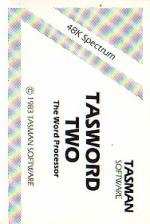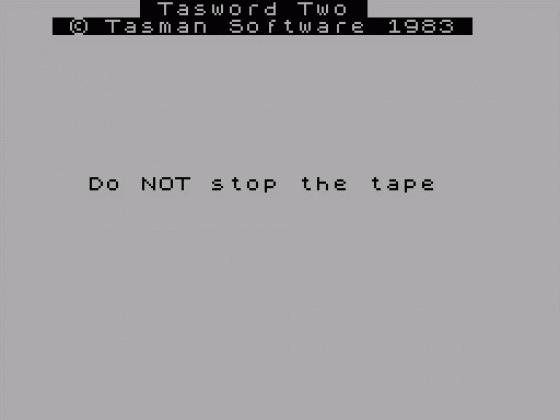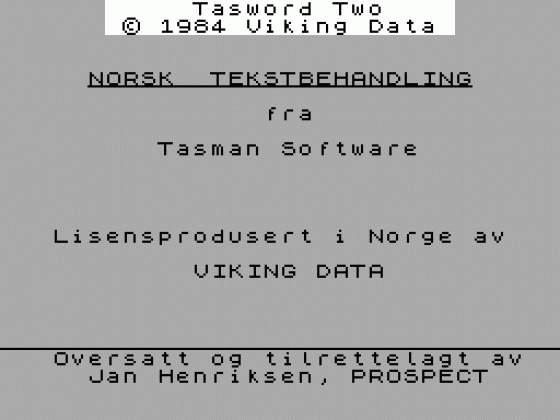
ZX Computing
 1st March 1987
1st March 1987
Categories: Review: Software
Publisher: Tasman
Machine: Spectrum 48K
Published in ZX Computing #35
The Ultimate Tasword?
Tasword +2
At last it's here - Tasword +2 on Discovery disc. Many of you are familiar with good old Tasword 2 - a little cumbersome, but very easy to use and thoroughly reliable. You probably also know that Tasword 3 is an upgrade of this, with all sorts of additional features - rapid cursor movement, headers, footers, pagination, word and character count, 128 column width, the list of options seems endless.
More Text
So what's different about Tasword +2? The major improvement, as in Tasword 128, is the gigantic text file. Tasword 2 allowed 320 lines, roughly ten double-spaced A4 pages. It didn't matter if they were all space; that's all you got. Tasword 3 improved on this by using text compression techniques. If there was a lot of space, you got more lines in the file. However, as a penalty, the "file full" marker came up without any warning, and then you often had to delete several lines before you could even get the cursor the bottom of the text again. I had a number of files full of lists of scientific references each one incomplete and lacking the title of the article. This is where the "aut" insert mode in Tasword 3 came in so useful; I was able to type the title into the middle of the reference without having to split it all first. However, this meant that I was expanding the file "from the middle outwards". And it suddenly threw up the "file full" and jammed solid. I resolved to test my new copy of Tasword +2 so I MERGEd the old Tasword 3 files into it. Well, it's true what they say. It holds an enormous amount of text, around 45-50 double-spaced A4 sheets, depending on the rest of the spacing in the text. And there are other differences from Tasword 3, or Tasword 128, too.
First of all, a lot of little bugs have been ironed out. That nasty little buglet which gives a lot of vertical lines across the screen when you ask the Opus version of Tasword 3 to load a file which doesn't exist has gone. And that problem Tasword 3 had over sequential printing of text files with ten character titles (it refused!) has now disappeared, too. Secondly, there are one or two subtle differences in the control keys. The one which is the most noticeable is the use of the symbol shift and "i" key for inserting characters or spaces instead of the "y" key as in Tasword 2 or Tasword 3. To make matters worse, in Tasword 3, the combination symbol shift and "i" deletes a letter; one needs to be very careful. The whole thing is a bit of a nuisance until you get used to it. Actually, all the symbol shifted key names have been replaced.
These are very minor grumbles, however, and to compensate, there are one of two further improvements. For instance, the action of symbol-shifted "a" is now instant; no delay for the main menu in this version. Automatic insert also works much more smoothly. And the size of the file! Talk about impressive! It contained my 170 references with no trouble at all! It's beautifully programmed and works like a dream. Tasword 3 files are totally compatible; just merge them in, one after the other; Tasword 2 files are readily converted using the T2T3 program supplied.
If you've got a Discovery disc and you want a wordprocessor, then get Tasword +2 - it's the best there is.
Other Reviews Of Tasword 2 For The Spectrum 48K
Tasword 2 (Tasman)
Steven Wetherill, one of our reviewers' competition runners up, take a look at Tasword







